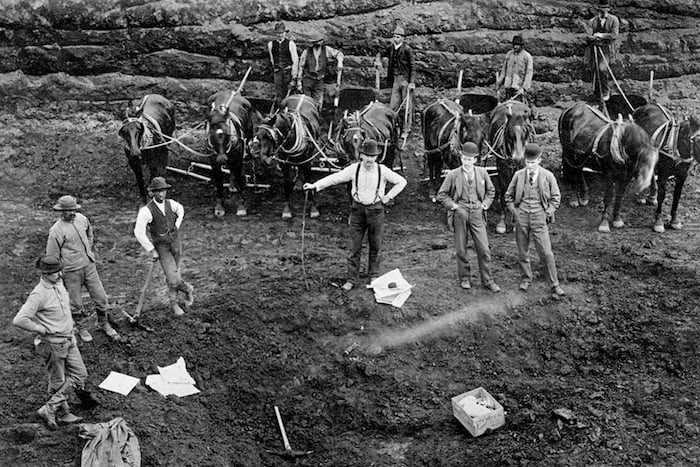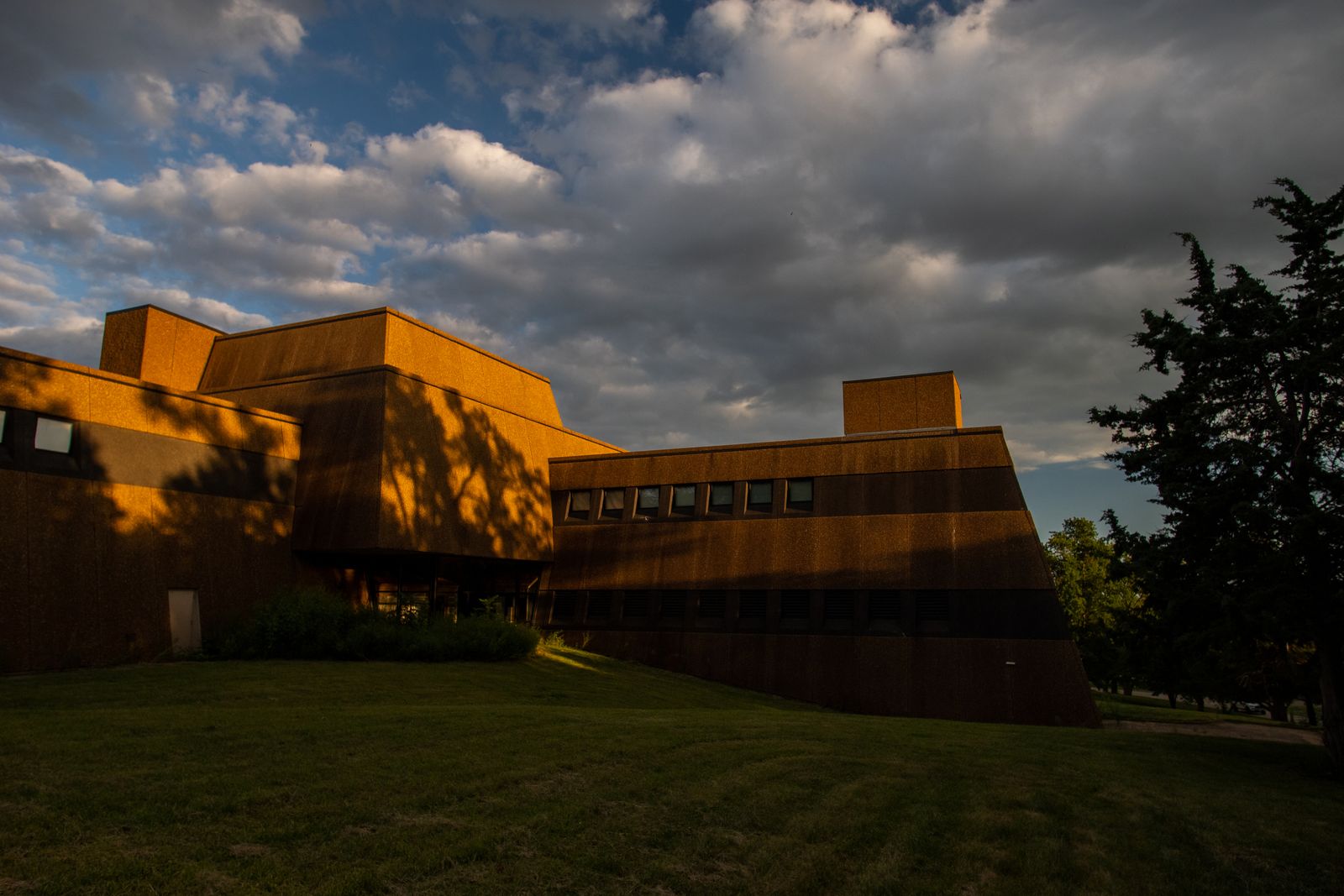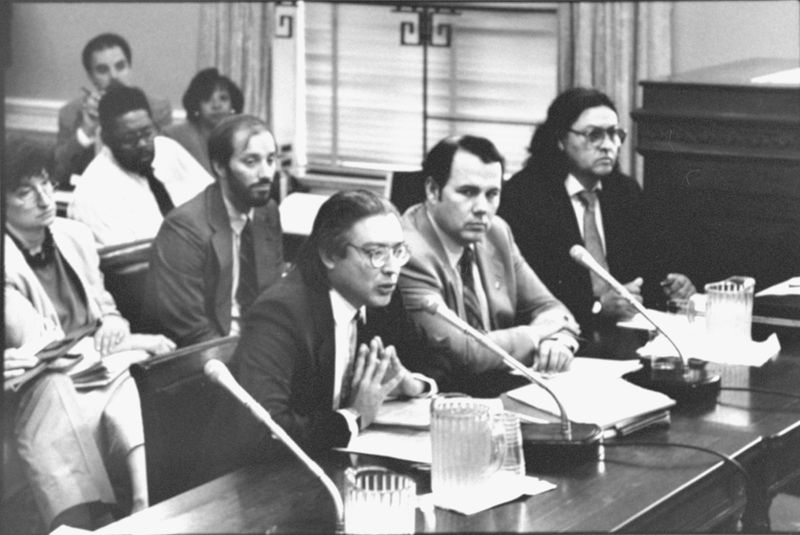Oregon Health & Sciences Univ.
Oregon Health & Sciences Univ. has made available for return 100% of the nine Native American remains that it reported to the federal government.
Where Native American remains reported by Oregon Health & Sciences Univ. were taken from
Timeline of Native American remains made available for return to tribes by Oregon Health & Sciences Univ.
How Oregon Health & Sciences Univ. compares to other institutions
Oregon Health & Sciences Univ. made Native American remains available for return to 76 tribes.
| Tribe | Remains Made Available for Return To |
|---|---|
| Confederated Tribes and Bands of the Yakama Nation | 9 |
| Confederated Tribes of Siletz Indians of Oregon | 9 |
| Confederated Tribes of the Grand Ronde Community of Oregon | 9 |
| Confederated Tribes of the Umatilla Indian Reservation | 9 |
| Confederated Tribes of the Warm Springs Reservation of Oregon | 9 |
| Big Pine Paiute Tribe of the Owens Valley | 7 |
| Bishop Paiute Tribe | 7 |
| Bridgeport Indian Colony | 7 |
| Burns Paiute Tribe | 7 |
| Cedarville Rancheria, California | 7 |
| Chemehuevi Indian Tribe of the Chemehuevi Reservation, California | 7 |
| Coeur D'Alene Tribe | 7 |
| Confederated Tribes of the Chehalis Reservation | 7 |
| Confederated Tribes of the Colville Reservation | 7 |
| Confederated Tribes of the Coos, Lower Umpqua and Siuslaw Indians of Oregon | 7 |
| Coquille Indian Tribe | 7 |
| Cow Creek Band of Umpqua Tribe of Indians | 7 |
| Cowlitz Indian Tribe | 7 |
| Duckwater Shoshone Tribe of the Duckwater Reservation, Nevada | 7 |
| Eastern Shoshone Tribe of the Wind River Reservation, Wyoming | 7 |
| Ely Shoshone Tribe of Nevada | 7 |
| Fort Bidwell Indian Community of the Fort Bidwell Reservation of California | 7 |
| Fort Independence Indian Community of Paiute Indians of the Fort Independence Reservation, California | 7 |
| Fort McDermitt Paiute and Shoshone Tribes of the Fort McDermitt Indian Reservation, Nevada and Oregon | 7 |
| Hoh Indian Tribe | 7 |
| Jamestown S'Klallam Tribe | 7 |
| Kaibab Band of Paiute Indians of the Kaibab Indian Reservation, Arizona | 7 |
| Kalispel Indian Community of the Kalispel Reservation | 7 |
| Klamath Tribes | 7 |
| Las Vegas Tribe of Paiute Indians of the Las Vegas Indian Colony, Nevada | 7 |
| Lone Pine Paiute-Shoshone Tribe | 7 |
| Lovelock Paiute Tribe of the Lovelock Indian Colony, Nevada | 7 |
| Lower Elwha Tribal Community | 7 |
| Lummi Tribe of the Lummi Reservation | 7 |
| Makah Indian Tribe of the Makah Indian Reservation | 7 |
| Moapa Band of Paiute Indians of the Moapa River Indian Reservation, Nevada | 7 |
| Modoc Nation | 7 |
| Muckleshoot Indian Tribe | 7 |
| Nez Perce Tribe | 7 |
| Nisqually Indian Tribe | 7 |
| Nooksack Indian Tribe | 7 |
| Northwestern Band of Shoshoni Nation | 7 |
| Paiute Indian Tribe of Utah | 7 |
| Paiute-Shoshone Tribe of the Fallon Reservation and Colony, Nevada | 7 |
| Port Gamble S'Klallam Tribe | 7 |
| Puyallup Tribe of the Puyallup Reservation | 7 |
| Pyramid Lake Paiute Tribe of the Pyramid Lake Reservation, Nevada | 7 |
| Quartz Valley Indian Community of the Quartz Valley Reservation of California | 7 |
| Quileute Tribe of the Quileute Reservation | 7 |
| Quinault Indian Nation | 7 |
| Reno-Sparks Indian Colony, Nevada | 7 |
| Samish Indian Nation | 7 |
| San Juan Southern Paiute Tribe of Arizona | 7 |
| Sauk-Suiattle Indian Tribe | 7 |
| Shoalwater Bay Indian Tribe of the Shoalwater Bay Indian Reservation | 7 |
| Shoshone-Bannock Tribes of the Fort Hall Reservation | 7 |
| Shoshone-Paiute Tribes of the Duck Valley Reservation, Nevada | 7 |
| Skokomish Indian Tribe | 7 |
| Snoqualmie Indian Tribe | 7 |
| Spokane Tribe of the Spokane Reservation | 7 |
| Squaxin Island Tribe of the Squaxin Island Reservation | 7 |
| Stillaguamish Tribe of Indians of Washington | 7 |
| Summit Lake Paiute Tribe of Nevada | 7 |
| Suquamish Indian Tribe of the Port Madison Reservation, Washington | 7 |
| Susanville Indian Rancheria, California | 7 |
| Swinomish Indian Tribal Community | 7 |
| Te-Moak Tribe of Western Shoshone Indians of Nevada | 7 |
| Timbisha Shoshone Tribe | 7 |
| Tulalip Tribes of Washington | 7 |
| Twenty-Nine Palms Band of Mission Indians of California | 7 |
| Upper Skagit Indian Tribe | 7 |
| Utu Utu Gwaitu Paiute Tribe of the Benton Paiute Reservation, California | 7 |
| Walker River Paiute Tribe of the Walker River Reservation, Nevada | 7 |
| Winnemucca Indian Colony of Nevada | 7 |
| Yerington Paiute Tribe of the Yerington Colony and Campbell Ranch, Nevada | 7 |
| Yomba Shoshone Tribe of the Yomba Reservation, Nevada | 7 |
Oregon Health & Sciences Univ. reported no funerary objects associated with the Native American remains.
Know how an institution is handling repatriation? Have a personal story to share? We'd like to hear from you.
Watch an informational webinar with our reporters.
This tool presents a dataset maintained by the National Park Service containing all the Native American human remains and associated funerary objects that institutions have reported to the federal government under the Native American Graves Protection and Repatriation Act. The dataset includes information about the state and county where remains and objects were taken from, which institutions hold them and whether they have been made available for return to tribes.
The data is self-reported by institutions. The amount of unrepatriated Native American remains reported by institutions is a minimum estimate of individuals and institutions frequently adjust these numbers when they reinventory groups of remains. Some institutions that are subject to NAGPRA have also entirely failed to report the remains in their possession. As a result, the numbers provided are best taken as estimates. The actual number and geographic scope of what’s held by publicly funded institutions is larger than what is presently documented.
ProPublica supplemented this dataset with information about cultural affiliation and disposition to specific tribes by systematically parsing the text of Notices of Inventory Completion published in the Federal Register. An additional dataset from the Department of Housing and Urban Development, the Tribal Directory Assessment Tool, was used for the section on remains not made available for return from counties that each tribe has indicated interest in to the federal government.
Institution location and tribal headquarters location information was provided by National NAGPRA. The location of some groups that are not federally recognized was provided through research by ProPublica.
Institutions that are part of a larger entity are grouped. (For example, the Mesa Verde National Park is part of the U.S. Department of the Interior.)
Institutions that have not submitted information to the federal government are not listed. The Smithsonian Institution is not listed because its repatriation process falls under the National Museum of the American Indian Act and it is not required to publicly report its holdings with the same detail as institutions subject to NAGPRA.
If you work for an institution and would like to provide comment on your institution’s repatriation efforts, please email [email protected]. If you think the data is incorrect or have a data request, please get in touch. We are aware of some issues with the accuracy of location information and tribes mistakenly being identified for disposition of Native American remains in published notices.
If you want to share something else with ProPublica, we’d like to hear from you.
If you have questions about implementing or complying with the Native American Graves Protection and Repatriation Act, get in touch with National NAGPRA or the NAGPRA Community of Practice.
We use the word “tribes” to refer to all groups that institutions made Native American remains available to under NAGPRA. This includes tribes, nations, bands, pueblos, communities, Native Alaskan villages, Native Hawaiian organizations and non-federally recognized groups.
Data sources from Department of the Interior, National Park Service, National NAGPRA Program, the Federal Register, Department of Housing and Development, Tribal Directory Assessment Tool


